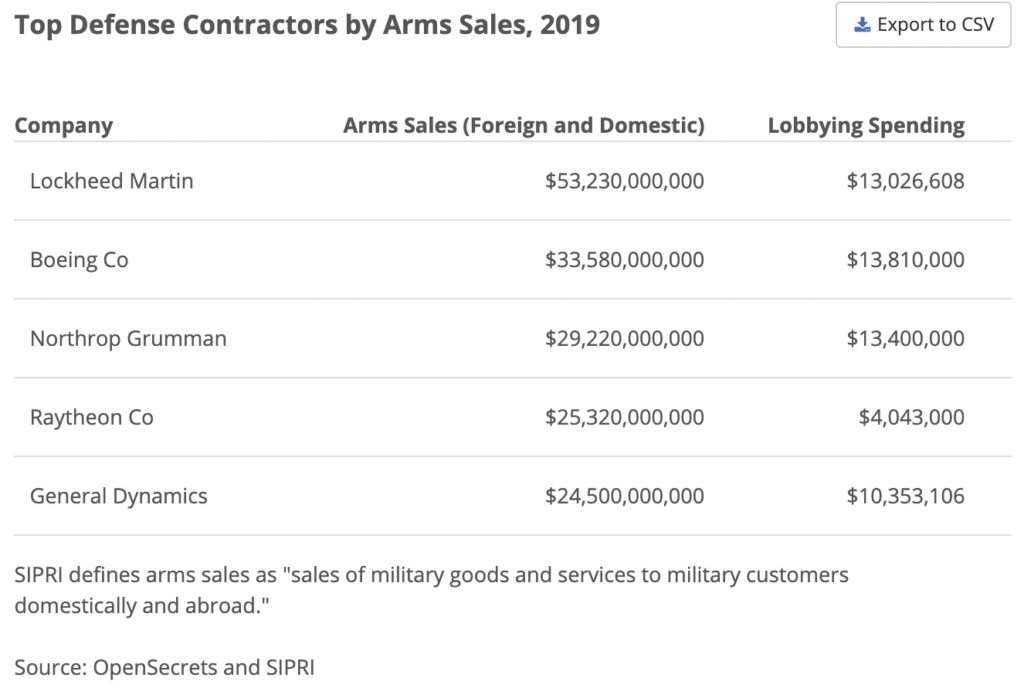The War in Afghanistan killed more than 241,000 people and cost the United States $2 trillion. What was the point? Why did we spend so much time and so many resources on a war that was doomed to fail?
As you might expect, big money played a major role.
How Private Contractors Fueled 20 Years of Military Policy
War has overwhelming bipartisan support in Congress. It’s why more than half of our nation’s discretionary spending goes towards the Defense Department each year, and why this budget increases without regard to which party is in power.
This isn’t a coincidence. Nearly every state plays a role in outfitting the military with weapons, machinery, and more, with massive investments from private defense contractors that translate to thousands of jobs.
Meanwhile, five of the nation’s largest defense contractors have collectively spent over $2.5 billion lobbying the federal government in the past two decades. Nearly three-quarters of these lobbyists are former federal employees and Capitol Hill staffers, giving them an advantage as they work the system. These “investments” in lobbying benefit these corporations countless times over in arms sales, forcing the cycle of war to continue.

What can we learn from all of this?
Even if we successfully withdraw all of our remaining troops from Afghanistan, military spending and defense lobbying aren’t going away. The United States remains the world’s largest arms dealer, outfitting allies and adversaries alike. We continue to support Saudi Arabia in its genocide against Yemeni civilians, in a conflict they have already lost. And Space Force continues to grow, with officials preparing for actual extraterrestrial combat.
When all is said and done, the end of the Afghanistan War does not mean an end to endless war. As long as defense contractors can spend unlimited sums on lobbying, Washington will find ways to invest further in the war machine. In order to pursue peace, we must STAMP BIG MONEY OUT OF POLITICS!
